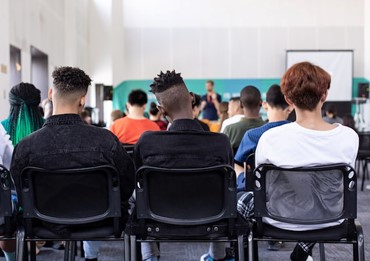Mike McFalls of Texas works as a school administrator. In the following article, Mike McFalls, principal, discusses three strategies that a teacher, administrator, or even a parent and student can contribute to in order to foster a learning environment that is more productive.
The classroom should not only be the place where students can grow and learn productively, but a place where they can feel safe to do so. Safety, of course, promotes productivity. The question is, what are strategies for creating a safe and productive educational climate?
Mike McFalls of Texas says that strategies for creating a safe and productive educational climate start with empathetically understanding what a student may need to feel safe, and act accordingly. The safer a student feels, the more productive they are. Teachers and school administrators can attempt to build trusting relationships, not only with students, but parents, as well.
Three of the Best Strategies for Productivity
Mike McFalls, principal says that a sense of safety is one of the main fostering agents of focus, which, as any parent, teacher, or even student knows, is paramount in being productive in a classroom setting. However, for students of all ages, school can also be a stressful experience. Between relational or social struggles, as well as the pressure to perform, a sense of security and efficiency is often hard to come by.
So what can teachers, students, parents, and administrators alike do to change this tendency for the better of everyone involved? Mike McFalls of Texas provides an outline below, of ways to implement three of the best strategies:
- Be Adaptive
- Meet Before Class Starts
- Build Trust, Not Judgement
Each of the items on the above list may seem self-explanatory as tactics, but like all good plans, they can benefit from some elaboration! In that interest, Mike McFalls of Texas says that adults and students alike can be prepared, no matter where in school they are participating.
Be Adaptive
Mike McFalls of Texas explains that both students and teachers must be
adaptive in the classroom; it’s simply part of interacting well with others. However, teachers can be mindful of the fact that many school systems would rather commit to one standardized teaching approach than remember each student as an individual.
Do whatever is possible to show students that their teachers are willing to meet them at their level and even consider offering choices in terms of homework or in-class exercises. Even simply giving a student an option between two different exercises can show a willingness to use teamwork for their success, and build up trust, which is discussed below. You can also look to make sure that there is a
fun tutoring environment.
Meet Before Class Starts
Administrators and teachers can get out ahead of the challenges and little frustrations of the day simply by going the extra mile and meeting before classes begin. This meeting can include the students themselves.
Mike McFalls of Texas says that it provides a piece of structure that is not centered around the performative aspect of schoolwork, but instead addresses the emotions of the class. As a parent, it is a good idea to make sure children make it to class in time for this morning meeting, especially if home lives are stressful.
Consider asking for volunteers to share one good thing that has happened to them so far in the morning, or simply give a cheerful address to the class.
 Build Trust, Not Judgement
Build Trust, Not Judgement
Finally, Mike McFalls, principal says that trust is the best way to help students and teachers alike feel safe when they come to school instead of beleaguered or stressed. Put in the time to ask the students about more than just their class work, building positive relationships that can encourage learners rather than ignore their emotional needs.
A study done by the
American Psychological Association discovered that students who have good relationships with teachers can contribute impressively to a good learning environment.
In Conclusion
In conclusion, Mike McFalls, principal says that creating a safe and productive educational climate is all about having the best strategy, not just for teachers and administrators to participate in, but for students and their parents to take part in, too.
Some of these strategies include taking steps that reflect a mindfulness of every student’s different learning styles. In addition to being adaptive, administrators and teachers can solidify their unity in the common goal of safety and productivity simply by meeting before classes are in session.
All of this helps foster trust in relationships with students and counteracts a judgmental environment. With these simple strategies in place, students can feel safe and therefore be more productive.
 Build Trust, Not Judgement
Build Trust, Not Judgement